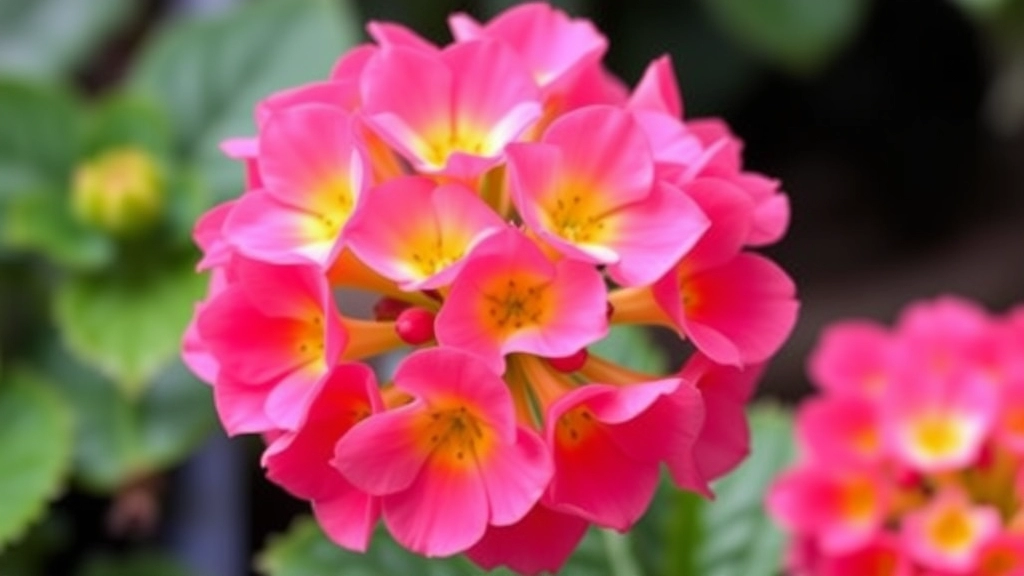Encouraging Your Kalanchoe to Bloom
Struggling to get your Kalanchoe to bloom again? You’re not alone. Many plant enthusiasts face the same challenge. Let’s dive into some practical steps to encourage those vibrant flowers to return. From ensuring the right lighting to perfecting your watering routine, I’ll guide you through the essentials.
Key Factors for Blooming
First, focus on lighting. Kalanchoe plants need plenty of bright, indirect sunlight to thrive. Position them near a window where they can soak up the rays without getting scorched.
Temperature Considerations
Next, maintain an ideal temperature. These plants prefer a cooler environment at night, around 15-18°C, which helps trigger blooming. Ready to see your Kalanchoe flourish? Let’s get started!
Essential Lighting for Kalanchoe Blooming
Are you struggling to get your Kalanchoe to bloom? One of the most critical factors is ensuring it receives the right lighting.
The Importance of Light for Kalanchoe
Kalanchoe plants thrive in bright, indirect sunlight. The right lighting conditions can significantly influence their blooming cycle.
- Optimal Light Levels: Aim for at least 6 hours of bright light daily.
- Location Matters: A south or west-facing window is ideal.
- Avoid Direct Sunlight: While Kalanchoes love light, too much direct sunlight can scorch their leaves.
Signs of Inadequate Lighting
If your Kalanchoe isn’t blooming, check its light exposure.
- Leggy Growth: Stretched stems indicate insufficient light.
- Pale Leaves: A lack of vibrancy in leaves can signal light deficiency.
Adjusting Light Exposure
If you notice these signs, consider the following adjustments:
- Rotate the Plant: Ensure all sides receive equal light.
- Supplemental Lighting: Use grow lights if natural light is limited, especially during winter months.
For more detailed tips on ensuring your Kalanchoe blooms, check out our step-by-step guide to getting Kalanchoe to bloom. Additionally, if your plant is not flowering despite optimal lighting, you might find useful insights in our article on why your florist Kalanchoe is not flowering.
How to Create the Ideal Temperature for Flower Formation

Have you ever wondered why your Kalanchoe isn’t blooming as beautifully as you’d hoped?
Temperature plays a crucial role in flower formation, and getting it right can make all the difference.
Ideal Temperature Range
For Kalanchoe to thrive and produce those stunning blooms, aim for a temperature between 18°C and 24°C (65°F to 75°F).
Here’s how to maintain that sweet spot:
- Daytime: Keep it warm but not scorching.
- Nighttime: A slight drop in temperature is beneficial, around 15°C to 18°C (59°F to 65°F).
Quick Tips for Temperature Control
- Avoid Drafts: Keep your plant away from chilly windows or air conditioning vents.
- Use Thermometers: Invest in a simple indoor thermometer to monitor conditions.
- Adjust Accordingly: If it’s too hot, consider moving your Kalanchoe to a cooler room or providing some shade.
Why Temperature Matters
Kalanchoe is sensitive to temperature fluctuations. If it’s too cold, you might see stunted growth. Too hot, and it could drop buds before they even bloom.
Finding that balance is key to encouraging those vibrant flowers.
Best Watering Practices for Promoting Blooming
When it comes to nurturing your Kalanchoe, watering is a crucial factor that can significantly influence its blooming potential. Many plant enthusiasts often wonder, “How much water does my Kalanchoe really need for the best blooms?”
Understanding Kalanchoe’s Water Needs
Kalanchoe is a succulent, which means it stores water in its leaves. This unique characteristic means that overwatering can be detrimental. Here are some key points to consider:
- Soil Moisture: Always check the top inch of the soil. If it feels dry, it’s time to water.
- Watering Frequency: During the growing season (spring and summer), water every 2-3 weeks. In the dormant season (autumn and winter), reduce this to once a month.
- Watering Technique: Water deeply but infrequently. Ensure that excess water drains out of the pot to prevent root rot.
Signs of Overwatering and Underwatering
Recognising the signs of improper watering can save your plant:
- Overwatering: Yellowing leaves, mushy stems, or a foul smell from the soil.
- Underwatering: Wrinkled leaves or drooping stems.
Tips for Effective Watering
To ensure your Kalanchoe thrives and blooms beautifully, consider these practical tips:
- Use Well-Draining Soil: A mix designed for succulents is ideal. For more detailed guidance, refer to our Kalanchoe care tips for thriving in Texas climate.
- Choose the Right Pot: Ensure your pot has drainage holes to allow excess water to escape.
- Temperature Matters: Water in the morning when temperatures are cooler to reduce evaporation. For additional tips, check out our article on summer care tips for a healthy Kalanchoe plant.
The Role of Fertilization in Boosting Kalanchoe’s Flowering
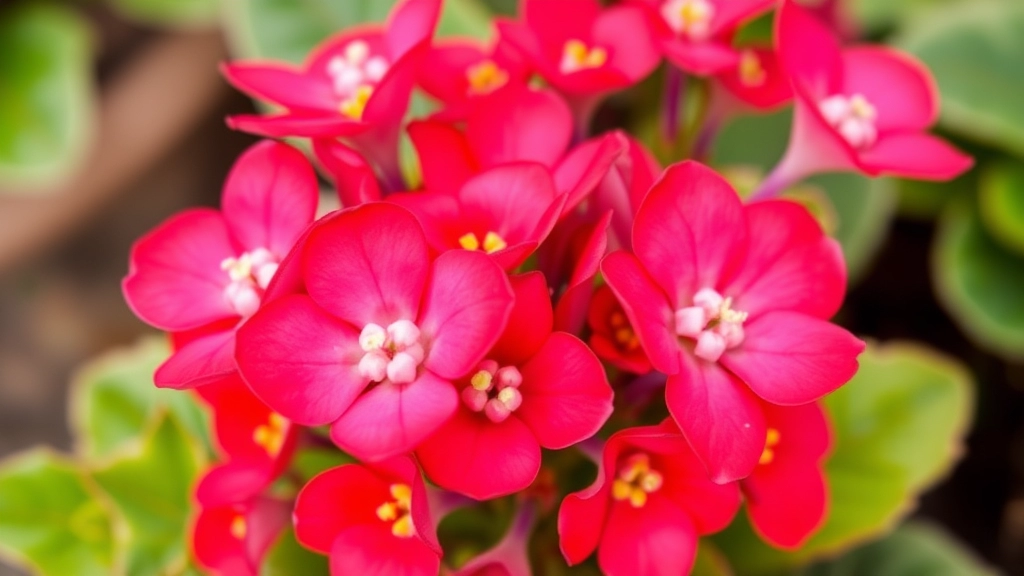
When nurturing your Kalanchoe, you may wonder how to enhance its blooming potential.
Fertilization plays a crucial role in promoting vibrant flowers and healthy growth.
Why Fertilization Matters:
- Nutrients: Kalanchoes require specific nutrients to thrive. A balanced fertiliser provides essential elements such as nitrogen, phosphorus, and potassium.
- Flower Development: Phosphorus, in particular, is vital for flower formation. It encourages blooming and enhances flower quality.
- Growth Support: Regular fertilisation supports overall plant health, ensuring your Kalanchoe has the energy to produce blooms.
Best Fertilization Practices:
- Type of Fertiliser: Use a water-soluble fertiliser formulated for flowering plants. Look for a ratio like 15-30-15, which is rich in phosphorus.
- Frequency: Fertilise every 2-4 weeks during the growing season (spring and summer). Reduce frequency in autumn and winter.
- Dilution: Always dilute the fertiliser to half-strength to avoid burning the roots.
Signs of Nutrient Deficiency:
- Poor Growth: If your Kalanchoe is growing slowly or not flowering, it may need fertilisation.
- Yellowing Leaves: This can indicate a nitrogen deficiency.
By implementing these fertilisation strategies, you can significantly enhance your Kalanchoe’s flowering potential.
Understanding Photoperiodism: Light Cycles and Blooming
Are you struggling to get your Kalanchoe to bloom? One key factor that could be impacting its flowering is photoperiodism, or how light cycles influence plant growth.
What is Photoperiodism?
Photoperiodism refers to a plant’s response to the length of day and night. Kalanchoe is a short-day plant, meaning it requires longer periods of darkness to trigger blooming.
Key Points to Consider:
- Light Duration: Kalanchoe typically needs around 12-14 hours of darkness each day to initiate flower production.
- Light Quality: Ensure the light source is bright, preferably indirect sunlight, to prevent leaf burn while still encouraging growth.
- Seasonal Changes: As seasons shift, the natural light cycle changes too. Be mindful of how this affects your plant’s blooming schedule.
Practical Tips:
- Control Light Exposure: If your Kalanchoe is indoors, consider using blackout curtains or placing it in a dark room for part of the day.
- Timing is Everything: Start this light manipulation a few weeks before you want your Kalanchoe to bloom.
- Observe Changes: Keep an eye on your plant. If you notice flower buds forming, you’re on the right track!
For more detailed guidance on getting your Kalanchoe to bloom, check out our step-by-step guide. Additionally, understanding the common causes and fixes for non-flowering Kalanchoe can further help you achieve those beautiful blooms.
How to Trigger a Second Bloom in Your Kalanchoe
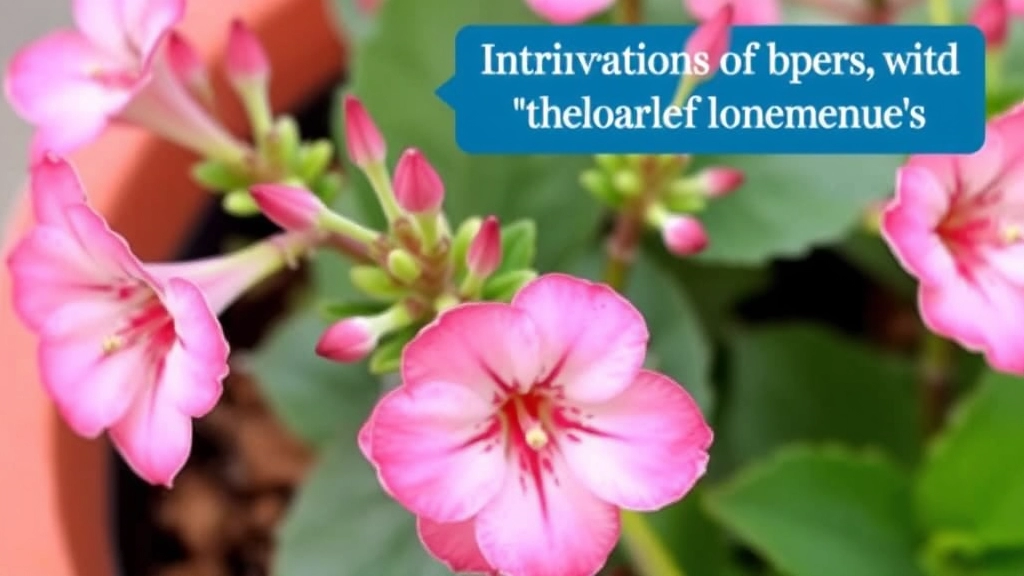
Have you ever admired your Kalanchoe’s vibrant blooms, only to wonder how to coax them back into action for a second round? You’re not alone! Many plant lovers face this challenge, but don’t worry—I’ve got some simple tips to help you get those flowers blooming again.
1. Timing is Everything
After your Kalanchoe finishes its first blooming cycle, it’s crucial to give it a little TLC.
- Wait for the Right Moment: Allow the plant to rest for about six weeks. This downtime helps it gather energy for the next bloom.
2. Pruning for Success
Once the flowers fade, it’s time to get snipping!
- Deadheading: Remove spent flowers to encourage new growth.
- Trim Back Leaves: If the leaves are looking scraggly, don’t hesitate to trim them back a bit. This helps redirect the plant’s energy.
3. Adjusting Light Exposure
Light plays a massive role in triggering blooms.
- Provide Bright, Indirect Light: Ensure your Kalanchoe gets plenty of bright, indirect sunlight.
- Limit Light in the Evening: For about six weeks, keep the plant in darkness for 14 hours daily. This mimics the shorter days of winter, which can signal the plant to bloom.
4. Watering Wisely
Watering practices can make or break your blooming efforts.
- Moderate Watering: Water when the top inch of soil feels dry. Overwatering can stress the plant, while underwatering can halt blooming.
5. Fertilize for Growth
Don’t forget about food!
- Use a Balanced Fertilizer: A diluted, balanced fertilizer every few weeks during the growing season can give your Kalanchoe the nutrients it needs.
After ensuring your Kalanchoe receives the right light and temperature, it’s crucial to focus on pruning and deadheading for optimal flower health. Do you often wonder why your Kalanchoe isn’t blooming as vibrantly as it should? Pruning and deadheading are essential practices that can significantly enhance your plant’s flowering potential.
### Why Prune and Deadhead?
– **Promotes New Growth**: By removing spent flowers and any dead or damaged leaves, you encourage the plant to redirect its energy towards producing new blooms.
– **Enhances Airflow**: Pruning can help improve airflow around the plant, reducing the risk of fungal diseases that can hinder blooming.
– **Maintains Shape**: Regular pruning helps maintain a tidy and attractive shape, making your Kalanchoe a stunning focal point in any space.
### How to Prune Your Kalanchoe
1. **Timing**: Prune after the blooming period to allow the plant to recover.
2. **Tools**: Use clean, sharp scissors or pruning shears to avoid damaging the plant.
3. **Technique**:
– Cut back any dead or wilted flowers at the base.
– Trim any leggy stems to encourage bushier growth.
### Deadheading Made Easy
– **What is Deadheading?**: This is the process of removing spent flowers to encourage further blooming.
– **When to Deadhead**: As soon as the flowers start to fade, remove them to stimulate new growth.
– **How to Deadhead**: Pinch or cut the flower stem just above the first set of healthy leaves.
For more detailed information on post-bloom care, check out our [postbloom Kalanchoe care guide](https://planthq.org/postbloom-kalanchoe-care-pruning-watering-rebloom-tips/). Additionally, if you’re curious about why your Kalanchoe isn’t flowering, our article on [causes and fixes](https://planthq.org/why-your-florist-kalanchoe-is-not-flowering-causes-and-fixes/) might be helpful.
Common Problems Hindering Kalanchoe Blooms and Solutions
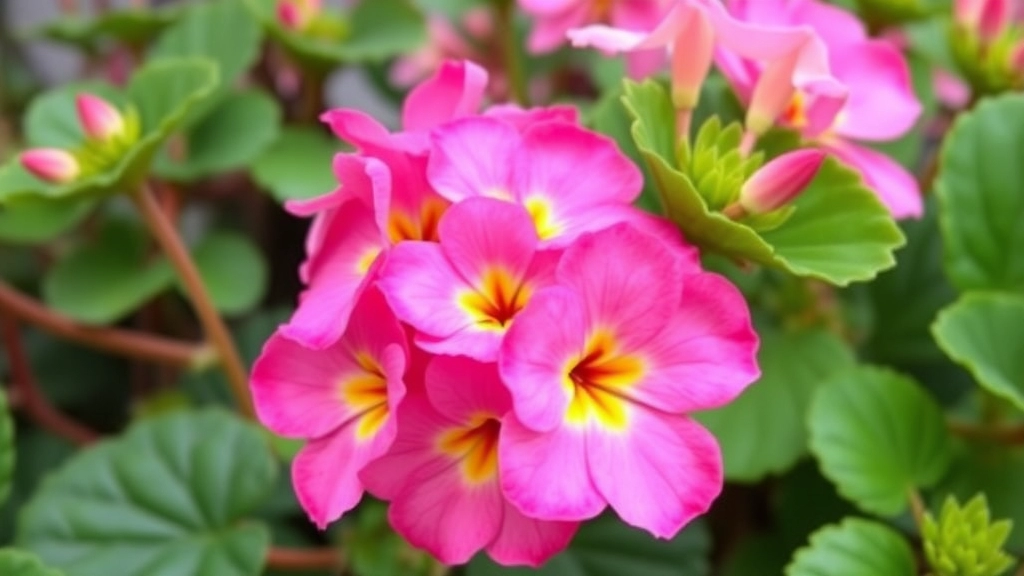
Ever looked at your Kalanchoe and thought, “Why isn’t it blooming?” You’re not alone. Many plant lovers face this dilemma.
Here are some common problems that could be stopping your Kalanchoe from showing off its beautiful flowers, along with easy solutions to get it back on track.
1. Insufficient Light
Kalanchoe loves bright light. If your plant isn’t getting enough, it might just sulk and refuse to bloom.
- Place it in a south or west-facing window.
- If natural light is limited, consider using a grow light.
2. Temperature Fluctuations
Kalanchoes prefer a stable environment. Too much heat or cold can stress them out.
- Keep your plant in a room that stays between 18-24°C.
- Avoid drafts from windows or doors.
3. Overwatering or Underwatering
Finding the right balance can be tricky. Too much water can lead to root rot, while too little can stress the plant.
- Water only when the top inch of soil feels dry.
- Ensure your pot has good drainage.
4. Nutrient Deficiency
If your Kalanchoe isn’t getting enough nutrients, it might not have the energy to bloom.
- Use a balanced fertilizer every few weeks during the growing season.
- Look for one high in phosphorus to encourage blooming.
5. Pests and Diseases
Pests like mealybugs or aphids can sap the energy from your plant, while diseases can cause all sorts of issues.
- Regularly check your plant for signs of pests.
- Treat with insecticidal soap or neem oil if you spot any troublemakers.
6. Improper Pruning
Not pruning your Kalanchoe can lead to overcrowding, making it hard for flowers to form.
- Remove spent blooms and any dead leaves to encourage new growth.
- Don’t be afraid to trim back leggy stems.
How to Care for Kalanchoe After Blooming
After your Kalanchoe has graced you with its vibrant blooms, you might be wondering what to do next. Caring for your plant post-bloom is crucial to ensure its health and prepare it for future flowering.
Assessing the Plant’s Condition
Once the flowers have faded, take a moment to evaluate your Kalanchoe:
- Check for Yellow Leaves: This can indicate overwatering or nutrient deficiencies.
- Look for Pests: Inspect the leaves and stems for any signs of pests like aphids or mealybugs.
Adjusting Watering Practices
Post-bloom, your Kalanchoe’s watering needs will change:
- Reduce Watering: Allow the soil to dry out between waterings. Overwatering can lead to root rot.
- Watering Schedule: Water less frequently, about every two to three weeks, depending on humidity and temperature.
Fertilization After Blooming
To support your plant’s recovery:
- Use a Balanced Fertilizer: A diluted, balanced fertilizer can help replenish nutrients.
- Frequency: Fertilize every four to six weeks during the growing season.
Pruning for New Growth
Pruning is essential for maintaining your Kalanchoe:
- Remove Dead Flowers: Snip off spent blooms to encourage new growth.
- Trim Leggy Growth: If your plant has become leggy, trim back the stems to promote bushier growth.
Providing Ideal Conditions
Creating the right environment will help your Kalanchoe thrive:
- Light: Ensure it receives bright, indirect sunlight.
- Temperature: Maintain a consistent temperature between 15°C and 25°C.
Preparing for the Next Bloom
After proper care, your Kalanchoe will be on its way to blooming again:
- Monitor Growth: Keep an eye on new leaf development, which indicates your plant is ready for its next blooming cycle.
For more detailed guidance on maintaining your Kalanchoe, you can refer to our Complete Care Guide for Kalanchoe Blossfeldiana. Additionally, if you encounter issues like drooping leaves, we have specific tips to address such problems.
Rest Period: Giving Your Plant Time Between Blooms
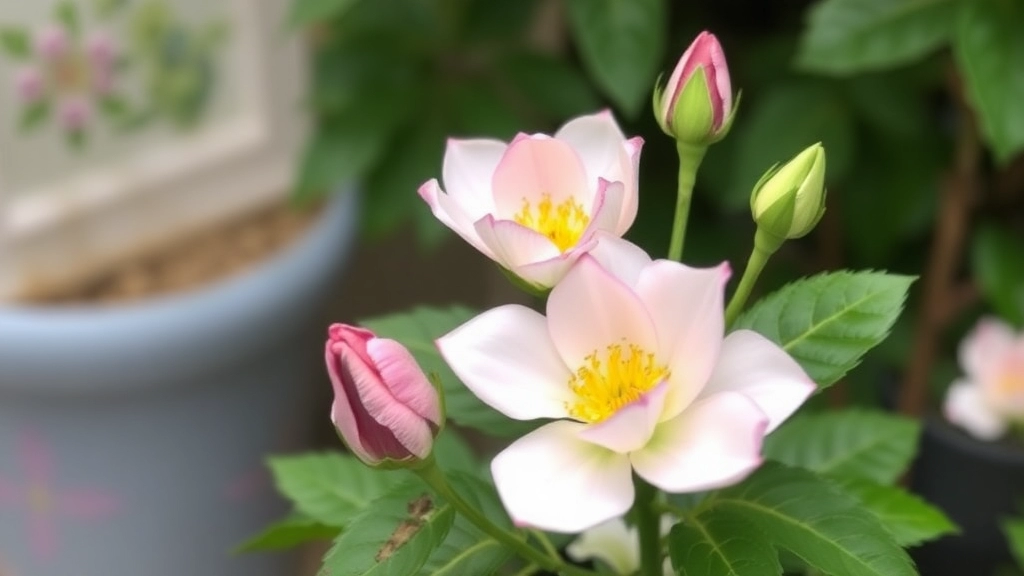
Have you noticed your Kalanchoe blooming beautifully and then suddenly going quiet?
It’s a common concern for plant lovers.
Understanding the rest period is crucial for keeping your Kalanchoe healthy and ready for its next show-stopping performance.
Why Rest Matters
Just like us, plants need a break.
After an impressive bloom, your Kalanchoe deserves a little downtime to recharge.
Here’s why it’s important:
- Energy Recovery: Blooming takes a lot of energy. Your plant needs time to restore its resources.
- Root Health: A rest period allows the roots to strengthen, which is vital for future growth.
- Prepping for Next Bloom: Giving your Kalanchoe a break sets the stage for another round of gorgeous flowers.
How Long Should the Rest Period Be?
Typically, a rest period of about 6 to 8 weeks is ideal.
During this time, you’ll want to adjust your care routine:
- Watering: Cut back on watering. Let the top inch of soil dry out before watering again.
- Light: Keep it in a bright spot but avoid direct sunlight to prevent stress.
- Temperature: Maintain a stable temperature, ideally between 15-20°C.
Signs Your Kalanchoe Is Ready for More
So, how do you know when your Kalanchoe is ready to bloom again?
Look for these signs:
- New growth appears
- Leaves look healthy and vibrant
- The plant seems more active
Once you spot these signs, it’s time to ramp up care again.
Transitioning Back to Blooming Care
As your Kalanchoe emerges from its rest, gradually reintroduce:
- Water: Start watering more frequently, ensuring the soil remains slightly moist.
- Fertilizer: Begin feeding with a balanced fertilizer to kickstart blooming.
- Light: Increase sunlight exposure to encourage flower formation.
With the right care, your Kalanchoe will be ready to dazzle you with its blooms once more!
How to Extend the Blooming Period of Your Kalanchoe
After ensuring your Kalanchoe is thriving with the right care, extending its blooming period can further enhance its beauty. Many plant enthusiasts often wonder how to keep their Kalanchoe flowering longer.
FAQs on Getting Kalanchoe to Bloom
What is the ideal temperature range for Kalanchoe to bloom?
The ideal temperature range for Kalanchoe to thrive and produce blooms is between 18°C and 24°C (65°F to 75°F) during the day and 15°C to 18°C (59°F to 65°F) at night.
How can I control the temperature for my Kalanchoe?
To control the temperature, avoid placing your plant near drafts from windows or air conditioning vents, use indoor thermometers to monitor conditions, and adjust the plant’s location if it’s too hot or too cold.
Why is fertilization important for Kalanchoe blooming?
Fertilization provides essential nutrients like nitrogen, phosphorus, and potassium, which are crucial for flower development and overall plant health. Phosphorus, in particular, encourages blooming and enhances flower quality.
What type of fertilizer should I use for Kalanchoe?
Use a water-soluble fertilizer formulated for flowering plants, preferably with a ratio like 15-30-15, which is rich in phosphorus. Dilute the fertilizer to half-strength to avoid burning the roots.
How often should I fertilize my Kalanchoe?
Fertilize every 2-4 weeks during the growing season (spring and summer) and reduce the frequency in autumn and winter.
How can I trigger a second bloom in my Kalanchoe?
To trigger a second bloom, allow the plant to rest for about six weeks, prune spent flowers and scraggly leaves, provide bright, indirect light, limit light exposure in the evening for six weeks, water moderately, and use a balanced fertilizer during the growing season.
What are common problems that hinder Kalanchoe blooms?
Common problems include insufficient light, temperature fluctuations, overwatering or underwatering, nutrient deficiency, pests, diseases, and improper pruning.
How can I solve the issue of insufficient light for my Kalanchoe?
Place the plant in a south or west-facing window or use a grow light if natural light is limited.
What should I do if my Kalanchoe is experiencing temperature fluctuations?
Keep the plant in a room with a stable temperature between 18-24°C and avoid drafts from windows or doors.
How do I know if my Kalanchoe has a nutrient deficiency?
Signs of nutrient deficiency include poor growth and yellowing leaves. Use a balanced fertilizer high in phosphorus to encourage blooming.
How should I handle pests and diseases on my Kalanchoe?
Regularly check for signs of pests like mealybugs or aphids and treat with insecticidal soap or neem oil if necessary.
Why does my Kalanchoe need a rest period between blooms?
A rest period allows the plant to recover energy, strengthen its roots, and prepare for the next blooming cycle. Typically, a rest period of about 6 to 8 weeks is ideal.
What care should I provide during the rest period?
During the rest period, reduce watering, keep the plant in a bright spot but avoid direct sunlight, and maintain a stable temperature between 15-20°C.
How do I know when my Kalanchoe is ready to bloom again?
Signs that your Kalanchoe is ready to bloom again include new growth, healthy and vibrant leaves, and increased plant activity.
How should I transition my Kalanchoe back to blooming care?
Gradually reintroduce more frequent watering, start feeding with a balanced fertilizer, and increase sunlight exposure to encourage flower formation.
References
-
Kalanchoe Plant Care: Tips For Growing Kalanchoe Plants
-
How to Grow and Care for Kalanchoe
-
Kalanchoe: How to Grow and Care for Kalanchoe Plants
